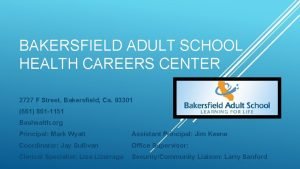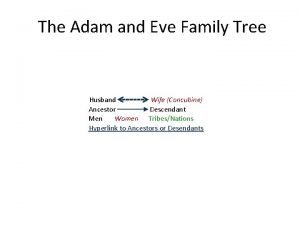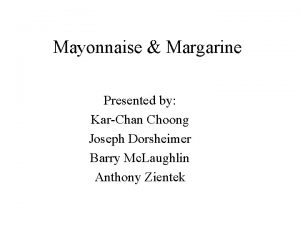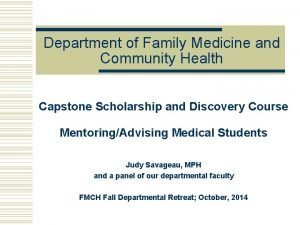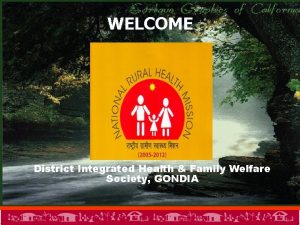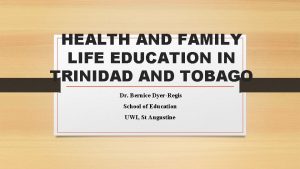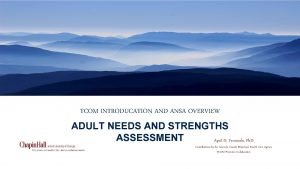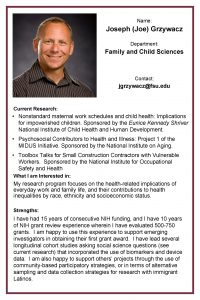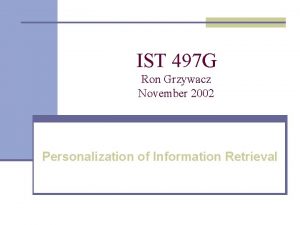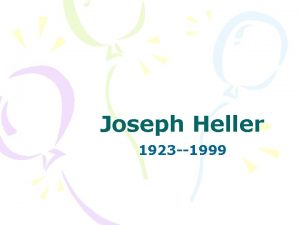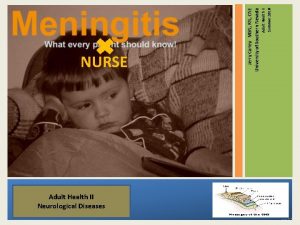Work Family and Adult Health Joseph G Grzywacz














- Slides: 14

Work, Family, and Adult Health Joseph G. Grzywacz, Ph. D. Department of Family and Community Medicine

About the Author n n n Ranging from undergraduate degree in health promotion and wellness to my postdoctoral training in the “social ecology of health” every stitch of my academic training is interdisciplinary I coordinated a worksite health promotion program for nearly 10 years. During that time, I observed daily life, particularly aspects of work and family, got in the way of people’s best intentions to change there behavior. Work, family, and health are compelling because each major element is multidimensional, dynamic, and connected in so many ways. Just when you think you’ve got it figured out, you discover something fresh and provocative!

Goal and Specific Aims n n The goal of this presentation is to illustrate the centrality of daily work and family life for understanding adult health. To accomplish this goal this presentation will q q q Describe work- and family-related trends that coincide with pressing public health problems Overview theoretical explanations why daily work and family life contribute to health problems, and present supporting evidence Translate basic ideas for public health practice

Learning Objectives n Learners will be able to: q q q List at least three trends related to work and family that bear upon health problems among adults Outline one theoretical explanation why daily work and family life would affect adult health Describe at least two implications of adults’ daily work and family lives for health practitioners

Some Important Health Trends n Obesity rates doubled for women and tripled for men since 1960 to 2000 q n n Diabetes increased more than 30% since 1970 s Depression identification and treatment increased more than 25% from 1987 - 1997 q n Severe obesity quadrupled since 1986 Depression is projected to become the 2 nd leading cause of disability worldwide The prevalence of health risk behaviors such as physical inactivity, smoking, and binge alcohol use have remained stable for the past decade despite widespread attempts to reduce.

Coinciding Demographic & Social Trends n Women’s participation in full-time, year round employment rose from 27% in 1971 to 42% in 1997 q n n Men’s real wages fell 59 cents an hour each year from 1989 to 1996 Adults are spending more time in paid work q n n In 2002, 61% of mothers of children less than 3 participated in the civilian labor market versus 34% in 1975 By 1998, the typical family spent 182 more hours in paid work than they did in 1989 The percentage of households w/children that were single-parent increased from 6% in 1950 to 27% in 1998 Decline in manufacturing and growth in the “ 24/7” service sector economy

Trend Summary n Economic and social forces over the past 40 years have dramatically reshaped adults’ daily work and family lives q q q n n Men are performing a greater share of household tasks More children are spending longing periods in nonparental care Women, families, and employers are trying to “balance” work and family Modifications to daily work and family life have been paralleled by troubling health trends Are changes in daily work and family life contribute to poor adult health?

Theoretical Linkages between Work, Family, and Adult Health n n The Priority Hypothesis Thesis: Satisfying work and family responsibilities is a central task of adult development which is more important than others q q Parents tend to work and family responsibilities before tending to personal health needs Adults, particularly mothers, cut back on sleep in order to accomplish their work and family tasks

Theoretical Linkages between Work, Family, and Adult Health n n The Time-Bind Hypothesis Thesis: Attending to work and family leaves little time for attending to health q q q Working parents have less leisure time Work and family undermine regular exercise, especially for women Increased reliance on prepackaged foods that are high in refined carbohydrate and low in fiber

Theoretical Linkages between Work, Family, and Adult Health n n The Strain Hypothesis Thesis: The challenges and complexities of daily work and family life produces psychological strain. q q Higher levels of work-family conflict associated with depression, obesity, and hypertension Difficulty combining work and family is associated with increased smoking, more problem drinking, less physical activity, and poorer

Translating the Centrality of Work and Family: Implications for Health Practitioners n n Acknowledge the priority adults give to their work and family responsibilities Build interventions around priorities q n Would campaigns promoting “play with children” or “family outings” promote physical activity more effectively than those emphasizing individual exercise? Lack of time, for many adults, is not an excuse. q q q Would a brief intervention or a self-guided program work as well as a structured weekly program? Help create time by targeting demands on adults time (e. g. , eliminating/restricting early morning or evening business meetings; promoting maximal stability in workers’ schedules) Help individuals make better use of the time they have.

Translating the Centrality of Work and Family: Implications for Health Practitioners n Target the factors that contribute to conflicts between work and family q q Can work schedules and school schedules coincide? Make sure that health advice/programs do not (inadvertently) create conflicts between work and family

Summary n n n Adults daily work and family lives have changed dramatically in the past 40 years, and these changes have coincided with concerning health issues Ample theoretical and empirical evidence exists suggesting that daily work and family life affects adult health Health professionals can use what we know about adults daily work and family lives to identify targets for health promotion programs, and to inform the design of those programs.

References
 Bakersfield adults school medical assistant
Bakersfield adults school medical assistant Sparks nevada police department
Sparks nevada police department The adam and eve family tree
The adam and eve family tree Mayonnaise process flow chart
Mayonnaise process flow chart Chapter 4 section 1 work and machines answer key
Chapter 4 section 1 work and machines answer key Conclusion on topic family
Conclusion on topic family Health and social care component 3
Health and social care component 3 Family and community health advisor
Family and community health advisor District integrated health and family welfare society
District integrated health and family welfare society What is health and family life education
What is health and family life education Duke medicine grand rounds
Duke medicine grand rounds Smart work and hard work
Smart work and hard work Physics 03-02 potential energy and conservative forces
Physics 03-02 potential energy and conservative forces Adult needs and strengths assessment
Adult needs and strengths assessment Wechsler adult and children scales - fsiq - mean 100 sd 15
Wechsler adult and children scales - fsiq - mean 100 sd 15
